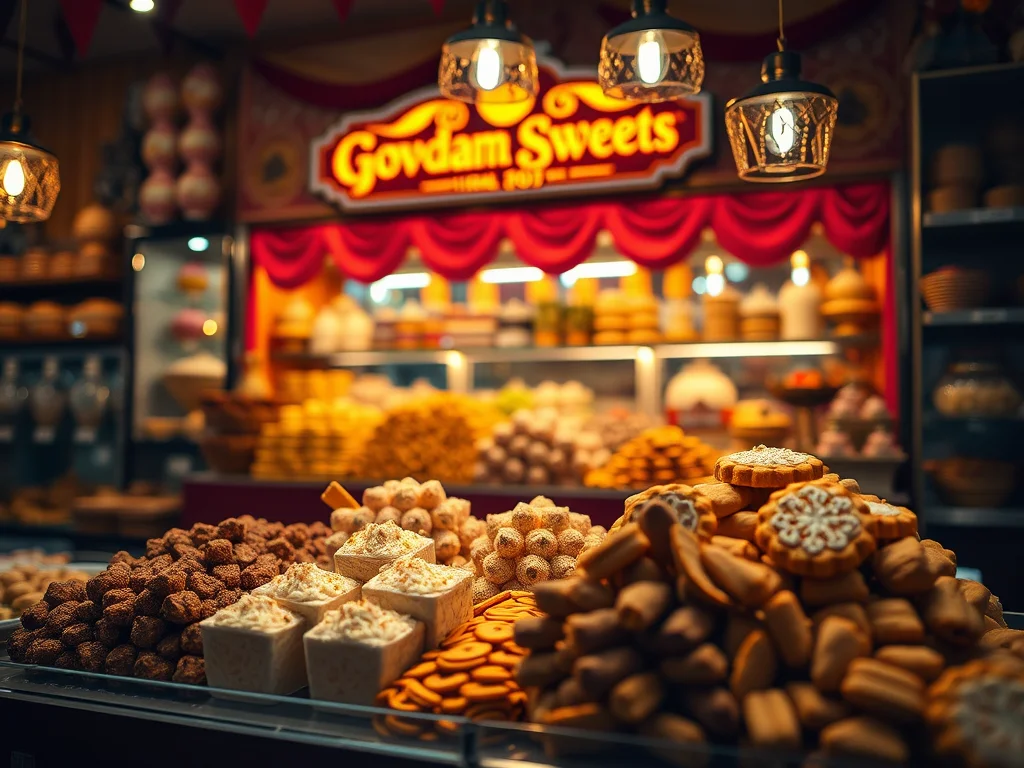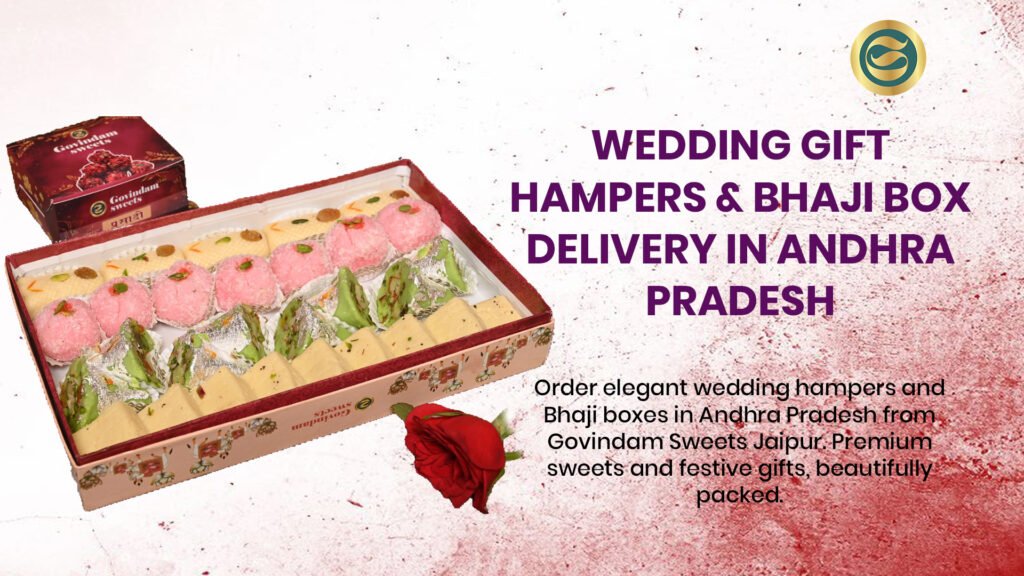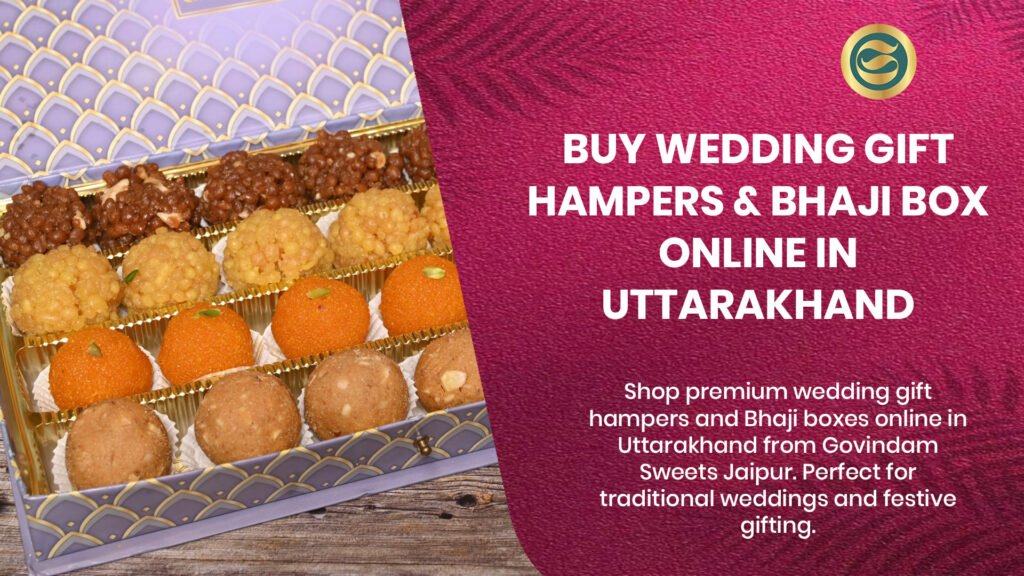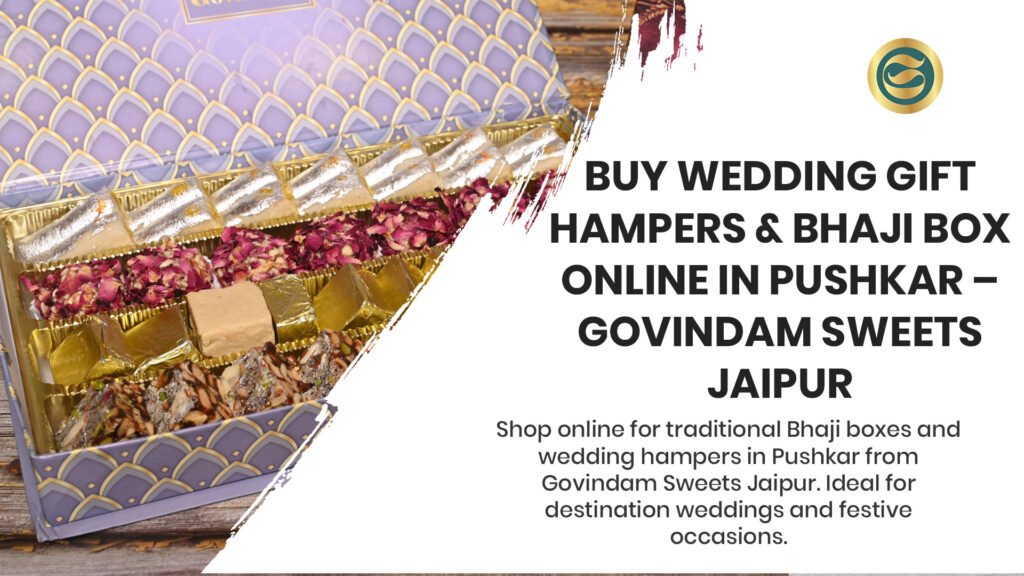
Posts
Discover Best Sweets During India Visit Tasty Regional Guide

Discover the best sweets during your India visit through comprehensive regional guide covering must-try preparations, quality vendor identification, cultural contexts, seasonal specialties, food safety tips, and authentic experiences. Explore North, South, East, West Indian confectionery excellence helping travelers navigate India’s magnificent sweet landscape for memorable culinary experiences.
Discover the Best Sweets During Your India Visit: A Tasty Guide
Introduction: India’s Sweet Heritage Awaits Discovery
Discovering the best sweets during your India visit opens remarkable culinary dimensions beyond savory curries, street foods, and regional specialties that typically dominate international travel guides. India’s confectionery traditions—spanning centuries of refinement across diverse regional cultures, agricultural contexts, religious influences, and artisan innovations—create magnificent sweet landscape offering travelers authentic cultural experiences, sensory pleasures, and memories that endure long after journeys conclude. From Bengal’s sophisticated cottage cheese-based preparations through Rajasthan’s desert-adapted specialties, South India’s gram flour masterpieces to Gujarat’s milk-rich traditions, every region contributes distinctive excellence making comprehensive sweet exploration rewarding yet overwhelming without guidance navigating options, quality variations, and cultural contexts enhancing appreciation beyond mere taste experiences.
Understanding the best sweets during your India visit requires appreciating that Indian desserts differ fundamentally from Western concepts—consumed throughout day rather than exclusively post-meal, featured prominently in religious offerings and festival celebrations, given as gifts expressing respect or affection, and categorized by regional origin and preparation method rather than universal “dessert” classification. This cultural context means sweet shops operate continuously serving customers purchasing for immediate consumption, religious ceremonies, social gifting, or family celebrations—creating dynamic environments where travelers witness authentic local interactions rather than staged tourist experiences.
Govindam Sweets represents authentic Rajasthani excellence accessible to travelers visiting Jaipur or ordering online nationwide. Shop now to explore our Ghewar varieties, Balwan Laddu, and comprehensive traditional offerings representing Pink City’s finest confectionery heritage. This comprehensive guide to the best sweets during your India visit covers regional must-try preparations, quality vendor identification, cultural contexts, seasonal specialties, food safety considerations, and practical navigation tips ensuring memorable authentic sweet experiences throughout your travels across India’s diverse regions and remarkable culinary landscape.
Regional Must-Try Sweets: A Geographic Journey
North India: Rich Milk-Based Traditions
Delhi and Surrounding Areas
Delhi’s sweet scene reflects North India’s Mughal-influenced milk-based traditions and contemporary cosmopolitan diversity:
Kaju Katli: Cashew fudge diamonds representing premium Indian confection with mild flavor, attractive appearance, and near-universal appeal making it ideal first Indian sweet experience.
Gulab Jamun: Fried milk solid balls in cardamom-scented syrup—warm, rich, and comforting with familiar fried-dough-in-sweet-liquid format creating accessibility.
Jalebi: Crispy spiral-shaped sweet in saffron syrup best consumed fresh from shops where preparation visible creates confidence and optimal taste.
Bengali Sweets: Delhi’s Bengali Market offers excellent sandesh, rasgulla, and other eastern specialties despite northern location, demonstrating regional sweet migration through India.
Rajasthan: Desert Innovation
Jaipur and other Rajasthani cities offer distinctive desert-adapted preparations:
Ghewar: Seasonal monsoon specialty (July-August) featuring intricate honeycomb structure—iconic Rajasthani preparation worth timing visits to experience authentic versions from quality establishments like Govindam Sweets.
Balwan Laddu: Dense nutritious laddu combining roasted flours, edible gum, nuts, and ghee—traditional energy food representing desert preparation wisdom.
Mawa Kachori: Fried pastry stuffed with sweetened milk solids representing Rajasthani innovation blurring sweet-savory boundaries creatively.
Mohanthal: Gram flour sweet showcasing besan mastery with rich texture, generous nut garnishing, and festive character.
Uttar Pradesh: Traditional Heartland
Agra, Mathura, Varanasi, and Lucknow offer historic sweet traditions:
Petha (Agra): Translucent ash gourd sweet in various flavors—regional specialty synonymous with Agra representing centuries of refinement.
Mathura Peda: Compact milk-based sweet from Krishna’s birthplace carrying religious significance and traditional excellence.
Malaiyo (Varanasi/Lucknow): Seasonal winter delicacy with ethereal milk foam texture—ephemeral specialty demonstrating regional innovation and seasonal wisdom.
East India: Bengali Sophistication
Bengal dominates eastern Indian sweet traditions with cottage cheese-based sophistication:
Sandesh: Cottage cheese sweet in countless varieties (plain, fruit-flavored, chocolate) showcasing Bengali refinement—subtle sweetness and interesting textures that sophisticated palates appreciate.
Rasgulla: Spongy white balls in light syrup—Bengal’s signature preparation with delicate texture and mild flavor representing eastern excellence.
Rossogolla: Similar to rasgulla but distinct preparation with regional pride and identity associations.
Mishti Doi: Sweet yogurt with caramelized flavor—traditional preparation demonstrating dairy mastery and regional preference for fermented dairy excellence.
Chomchom: Oval-shaped cottage cheese sweet with distinctive texture—regional favorite demonstrating Bengali innovation within traditional framework.
Patishapta: Thin crepe filled with coconut and milk mixture—seasonal preparation showcasing Bengali versatility across sweet formats.
South India: Diverse Regional Excellence
South Indian states contribute distinctive preparations often surprising travelers expecting uniform “Indian sweet” category:
Karnataka: Mysore Pak: Famous gram flour sweet with unique texture between brittle and fudge—rich, ghee-forward preparation representing southern confectionery excellence widely recognized across India.
Tamil Nadu: Various traditional preparations including sweet pongal, adhirasam, and regional specialties often incorporating jaggery rather than refined sugar creating distinctive flavor profiles.
Kerala: Limited traditional sweet culture compared to other regions but distinctive preparations using local ingredients—banana, coconut, jaggery creating unique regional character.
Andhra Pradesh: Rich sweet traditions with generous ghee usage and bold flavors—preparations like bobbatlu (sweet stuffed flatbread) representing regional preferences.
West India: Gujarati and Maharashtrian Traditions
Western states offer distinctive preparations reflecting Jain influences and regional preferences:
Gujarat
Mohanthal: Already mentioned under Rajasthan but Gujarat claims strong ownership—gram flour sweet with generous nuts and festive character.
Basundi: Thickened sweetened milk with nuts and cardamom—simple yet elegant preparation showcasing Gujarati dairy excellence.
Shrikhand: Strained yogurt sweetened and flavored—tangy-sweet preparation demonstrating regional preference for fermented dairy.
Jalebi-Fafda: Traditional combination pairing sweet jalebi with savory fafda particularly during Dussehra festival.
Maharashtra
Puran Poli: Sweet lentil-stuffed flatbread—regional favorite transcending pure sweet category into meal component.
Modak: Dumpling filled with coconut and jaggery—particularly significant during Ganesh Chaturthi festival with religious associations.
Shrikhand and Basundi: Shared with Gujarat representing broader western Indian dairy traditions.
Quality Vendor Identification: Finding Authentic Excellence
Characteristics of Quality Sweet Establishments
Identifying quality sweet shops ensures positive experiences and minimizes food safety concerns:
Cleanliness and Hygiene: Visible cleanliness in display areas, preparation spaces (if visible), and overall premises indicates standards worth trusting. Modern glass displays, proper refrigeration for perishable items, and attentive staff all suggest quality commitment.
Customer Traffic: Busy shops with local customer flow indicate community trust and quality reputation—locals voting with patronage provides strongest quality indicator beyond tourist recommendations.
Freshness Indicators: Sweet displays should appear fresh without dried edges, oil separation, or staleness signs. Ask about preparation timing and observe whether items move quickly indicating regular turnover.
Established Reputation: Heritage shops with decades of operation, visible history, and local recognition suggest sustained quality maintaining community loyalty across generations.
FSSAI Licensing: Food Safety and Standards Authority of India certification indicates basic regulatory compliance and accountability—check for visible license display and validity.
Transparent Pricing: Clear pricing without excessive haggling or tourist-specific rates suggests honest operations worth patronizing repeatedly.
Regional Recommendations
While comprehensive listing exceeds article scope, general guidance helps:
Jaipur: Govindam Sweets represents authentic Rajasthani preparation excellence. Additional options include established Johari Bazaar, MI Road, and Bapu Bazaar area shops with visible local patronage.
Delhi: Bengali Market for Bengali sweets, Chandni Chowk’s historic establishments, and contemporary chains like Haldiram’s or Bikanervala offering consistent quality across locations.
Kolkata: Virtually any established shop in areas like Shyambazar, New Market, or Park Street offers excellent Bengali sweets given regional expertise and competitive quality standards.
Mumbai: Numerous quality establishments across city with some neighborhoods like Dadar offering concentrated sweet shop districts.
Chennai: Traditional establishments and contemporary chains offer South Indian specialties alongside pan-Indian favorites.
Practical Navigation Tips for Sweet Exploration
Overcoming Communication Barriers
Language differences need not prevent sweet discovery:
Visual Selection: Display cases enable pointing at desired items without complex verbal communication—simply indicate selections and quantity needs.
Learning Key Terms: Basic Hindi/regional language sweet names facilitate ordering—”ek kilo” (one kilogram), “aadha kilo” (half kilogram), “char piece” (four pieces) combined with item names enable basic transactions.
Translation Apps: Smartphone translation applications help reading sweet names, asking preparation questions, or communicating dietary restrictions when necessary.
Local Assistance: Hotel concierges, tour guides, or friendly locals often happily recommend sweet shops and assist first visits helping travelers navigate unfamiliar environments confidently.
Quantity and Sampling Strategies
Managing quantity while exploring variety:
Start Small: Purchase small quantities (250 grams or 4-6 pieces) when trying unfamiliar preparations avoiding waste from discovering non-preferred items in large quantities.
Variety Boxes: Many shops offer mixed boxes containing multiple varieties in small portions—ideal exploration strategy providing breadth without excessive quantity.
Share Experiences: Travel companions enable sharing different selections multiplying variety exposure without individual over-consumption.
Multiple Visits: Rather than comprehensive single-visit purchasing, multiple smaller visits enable gradual exploration while maintaining freshness and manageable consumption.
Gift Intentions: Consider purchasing gifts for home even if personal consumption limits constrain—quality Indian sweets travel reasonably well and make appreciated gifts for family and friends.
Storage and Transportation
Maintaining quality during travel:
Immediate Consumption: Freshest experience comes from consuming sweets soon after purchase—plan sweet shop visits when time permits immediate enjoyment.
Refrigeration Access: Hotel rooms with refrigerators enable storing perishable sweets (milk-based preparations particularly) maintaining quality across multiple days.
Dry Sweets Travel Better: Laddu varieties, certain barfi types, and preparations with lower moisture content withstand travel better than syrup-soaked or cream-topped varieties.
Proper Packaging: Request proper packaging when purchasing for travel—sweet shops understand transportation needs and provide appropriate containers with protective materials.
Customs Regulations: Check destination country customs regulations regarding food imports before attempting international transport—many countries restrict or prohibit certain food items requiring declaration.
Cultural Contexts Enhancing Appreciation
Festival Associations and Seasonal Specialties
Understanding cultural contexts enriches experiences:
Diwali (October/November): Festival of Lights creates peak sweet consumption with shops offering extensive varieties, special preparations, and gift-focused packaging—exceptional time experiencing Indian sweet culture despite crowds and premium pricing.
Holi (March): Spring festival features specific preparations like gujiya (sweet fried pastry) and various traditional items—regional variations create diverse seasonal specialties.
Raksha Bandhan (August): Brother-sister festival involves sweet exchanges making shops particularly busy with gift-focused offerings.
Regional Festivals: Each state’s festivals feature specific sweet traditions—Teej in Rajasthan (Ghewar), Durga Puja in Bengal, Onam in Kerala, Pongal in Tamil Nadu—timing visits to festivals provides unique cultural experiences and seasonal specialty access.
Seasonal Preparations: Certain sweets appear seasonally—Ghewar during monsoon (July-August), malaiyo in winter (December-February), specific preparations during harvest festivals—seasonal timing enables experiencing traditional preparations unavailable year-round despite modern capability producing anything anytime.
Religious and Social Significance
Sweets carry meanings beyond taste:
Temple Prasad: Sweets offered in temples then distributed as blessed food carry spiritual significance—accepting and consuming prasad participates in religious custom even for non-Hindu visitors respecting cultural practices.
Life Celebrations: Births, weddings, achievements all involve sweet distributions—witnessing or receiving sweet offerings during Indian celebrations provides authentic cultural participation beyond tourist experiences.
Gift-Giving Traditions: Sweets represent appropriate gifts for various social occasions—hosts, business associates, service providers all appreciate quality sweet presentations demonstrating cultural awareness and respect.
Food Safety and Hygiene Considerations
Minimizing Health Risks
Enjoying sweets while maintaining health:
Stick to Busy Establishments: High customer turnover indicates freshness and community trust—empty shops with old-looking displays suggest avoiding despite lower prices or convenient locations.
Observe Preparation When Possible: Watching sweets being made provides confidence about ingredients, cleanliness, and preparation standards—fresh preparation visible creates comfort unavailable with pre-made displays only.
Packaged Options: Commercially packaged sweets from established brands offer hygiene assurance through factory standards and sealed packaging—trade-off involves potentially reduced freshness compared to artisan shop preparations.
Start Gradually: First days in India, consume sweets moderately allowing digestive system adjusting to new foods, ingredients, and bacterial environments before extensive indulgence.
Avoid Water-Based Preparations Initially: Sweets prepared with water carry higher contamination risks than oil-fried or pure milk-based items—once acclimatized, expand to full variety range as comfort and experience increase.
Trust Instincts: If establishment seems questionable—poor cleanliness, suspicious appearance, uncomfortable feeling—respectfully decline and seek alternatives despite potential offense or inconvenience.
Dietary Restrictions and Allergies
Managing specific requirements:
Vegetarian Options: Virtually all Indian sweets are vegetarian (some contain eggs though most don’t)—few concerns for vegetarian travelers unlike savory cuisine where hidden animal products appear more frequently.
Nut Allergies: Many Indian sweets contain or contact nuts (cashew, almond, pistachio)—communicate allergies clearly and verify ingredients before consumption since cross-contamination common in sweet shops.
Dairy Restrictions: Most traditional Indian sweets are milk-based creating challenges for lactose-intolerant or vegan travelers—few dairy-free traditional options exist though some contemporary establishments offer alternatives.
Sugar Restrictions: Diabetics or sugar-avoiding travelers face challenges since sweets inherently sugar-forward—some shops offer sugar-free versions though authenticity and quality vary, making moderation rather than substitution often more satisfying approach.
Gluten Concerns: Many sweets use wheat flour (particularly fried preparations)—verify ingredients when gluten sensitivity or celiac disease requires avoidance.
Seasonal Specialties Worth Timing Visits
Monsoon Preparations (July-August)
Ghewar: Rajasthan’s iconic honeycomb sweet peaks during Teej festival—planning Jaipur visits during this period enables experiencing authentic seasonal preparation from quality establishments like Govindam Sweets.
Malpua: Various regions prepare this fried pancake sweet particularly during monsoon season—warm fresh malpua represents seasonal comfort food.
Winter Specialties (November-February)
Malaiyo/Daulat ki Chaat: Ephemeral milk foam preparation appearing winter mornings in Varanasi and Lucknow—magical texture and seasonal exclusivity create memorable experiences for those timing visits appropriately.
Gajak and Rewri: Sesame and jaggery preparations associated with winter festivals like Makar Sankranti—warming traditional foods demonstrating seasonal wisdom.
Til ke Laddu: Sesame laddu varieties featuring prominently in winter celebrations—regional variations create diverse seasonal exploration opportunities.
Festival-Specific Preparations
Gujiya (Holi): Sweet fried pastry with khoya and nut filling—distinctly associated with spring festival creating seasonal availability peak though some shops offer year-round.
Modak (Ganesh Chaturthi): Dumpling sweet particularly significant in Maharashtra during August/September festival—religious associations create seasonal prominence.
Nolen Gur Sweets (Bengal, Winter): Date palm jaggery season creates distinctive Bengali winter sweets showcasing seasonal ingredient excellence.
The Govindam Sweets Jaipur Experience
Authentic Rajasthani Excellence
Travelers visiting Jaipur discover authentic Rajasthani sweet traditions through Govindam Sweets’ heritage preparations:
Signature Ghewar: Multiple varieties including plain traditional, mawa-enriched, malai-topped, and paneer options showcase monsoon sweet excellence—seasonal timing (July-August) enables optimal authentic experience.
Balwan Laddu: Traditional nutritious preparation demonstrating desert-adapted sweet-making wisdom—year-round availability provides consistent access to regional specialty.
Comprehensive Traditional Range: Beyond signatures, extensive offerings spanning regional specialties and pan-Indian favorites provide convenient one-stop exploration of quality traditional preparations.
Quality Assurance: Generations of family expertise, authentic preparation methods, quality ingredients, and customer-focused service create reliable experiences for travelers seeking genuine Rajasthani confectionery excellence.
Convenient Access for Travelers
Physical Locations: Jaipur presence enables direct visits where travelers observe operations, interact with knowledgeable staff, and make fresh selections.
Online Ordering: Travelers unable visiting Jaipur physically or desiring Delhi, Mumbai, or other location delivery access authentic Rajasthani sweets through our online platform with nationwide delivery.
Gift Solutions: Departure gift needs or sending sweets home easily managed through packaging and shipping services accommodating traveler requirements.
Creating Memorable Sweet Experiences
Documentation and Memory Creation
Capturing experiences enhances memories:
Photography: Sweet shops‘ colorful displays, artisan preparation processes, and vibrant atmospheres create excellent photographic subjects—respectfully request permission before photographing people or shop interiors.
Taste Notes: Journaling about favorites, discoveries, and impressions creates lasting memory aid for post-trip reflection and potential future replication attempts or recommendations to other travelers.
Learn Preparation Stories: Engaging shopkeepers about preparation methods, family histories, or regional traditions adds depth to experiences beyond mere consumption—many artisan sweet makers enjoy sharing knowledge with genuinely interested visitors.
Sharing Experiences and Recommendations
Contributing to traveler community:
Online Reviews: Thoughtful reviews on Google, TripAdvisor, or travel forums help future travelers discovering quality establishments and avoiding disappointing experiences.
Social Media Sharing: Documenting sweet discoveries through social platforms inspires others while creating personal memory archives revisitable after travels conclude.
Bringing Home: Sharing Indian sweets with family and friends extends experiences beyond individual consumption while introducing others to remarkable traditions potentially inspiring future travels or continued exploration through online ordering from quality establishments.
Conclusion: Sweet Memories from Incredible India
Discovering the best sweets during your India visit creates remarkable memories, authentic cultural experiences, and sensory pleasures that endure long after journeys conclude. India’s magnificent sweet landscape—spanning regional diversity, traditional excellence, artisan craftsmanship, and cultural significance—rewards curious travelers willing to venture beyond familiar comfort zones into remarkable confectionery traditions representing centuries of refinement and regional pride. Whether experiencing Bengal’s sophisticated cottage cheese preparations, Rajasthan’s desert-adapted specialties, South India’s distinctive gram flour masterpieces, or Gujarat’s milk-rich traditions, every regional exploration reveals India’s vast culinary creativity and cultural richness through sweet expressions connecting contemporary travelers to timeless traditions.
The practical guidance, quality identification tips, cultural contexts, and regional recommendations throughout this guide empower confident sweet exploration creating meaningful experiences rather than merely checking boxes on tourist checklists. Approaching Indian sweets with openness, cultural respect, reasonable food safety awareness, and genuine curiosity transforms simple taste experiences into profound cultural connections and cherished memories that friends and family enjoy hearing about long after returning home from incredible India adventures.
Visit Govindam Sweets online to continue your sweet exploration after India travels conclude or access authentic Rajasthani preparations during your visit through our physical Jaipur locations or online ordering with nationwide delivery. Experience our Ghewar varieties, Balwan Laddu, and comprehensive traditional offerings representing Pink City’s finest confectionery heritage. Through discovering the best sweets during your India visit—from heritage establishments maintaining traditional excellence across diverse regions—participate in living cultural traditions, support artisan communities, create lasting memories, and develop appreciation for remarkable confectionery heritage that Indian culture contributes to global gastronomic diversity deserving celebration, preservation, and transmission across generations of sweet lovers worldwide.




